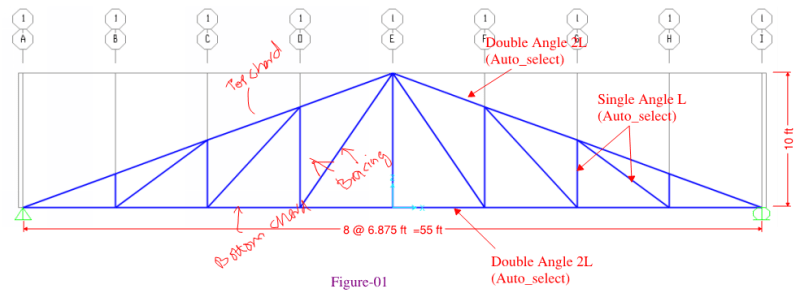Hello Engineers,



Modeling of Truss members as shown in Figure-01 have bending moments from analysis when the bottom chord is considered Continuous. As the truss members are usually pin joints, but due to continuity, the top and bottom chord are not considered to be pin with adjacent members as shown in Figure-02. So do you think it should be considered pinned while analyzing it as shown in the figure-03? or Figure-02 is Correct?








